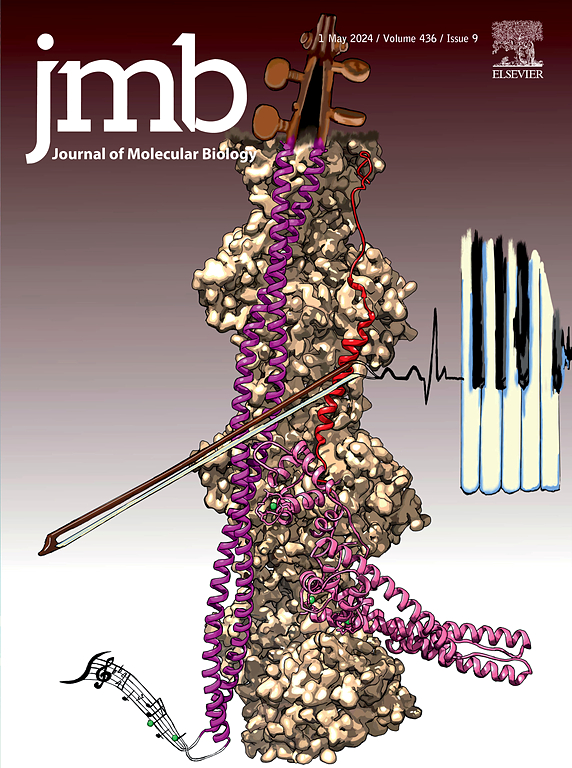ENsiRNA: A Multimodality Method for siRNA-mRNA and Modified siRNA Efficacy Prediction Based on Geometric Graph Neural Network
IF 4.7
2区 生物学
Q1 BIOCHEMISTRY & MOLECULAR BIOLOGY
引用次数: 0
Abstract
With the rise of small interfering RNA (siRNA) as a therapeutic tool, effective siRNA design is crucial. Current methods often emphasize sequence-related features, overlooking structural information. To address this, we introduce ENsiRNA, a multimodal approach utilizing a geometric graph neural network to predict the efficacy of both standard and modified siRNA. ENsiRNA integrates sequence features from a pretrained RNA language model, structural characteristics, and thermodynamic data or chemical modifications to enhance prediction accuracy. Our results indicate that ENsiRNA outperforms existing methods, achieving over a 13% improvement in Pearson Correlation Coefficient (PCC) for standard siRNA across various tests. For modified siRNA, despite challenges associated with RNA folding methods, ENsiRNA still demonstrates competitive performance in different datasets. This novel method highlights the significance of structural information and multimodal strategies in siRNA prediction, advancing the field of therapeutic design.

ENsiRNA:一种基于几何图神经网络的siRNA- mrna和改良siRNA疗效预测的多模态方法。
随着小干扰RNA (siRNA)作为一种治疗工具的兴起,有效的siRNA设计至关重要。目前的方法往往强调序列相关的特征,而忽略了结构信息。为了解决这个问题,我们引入了ENsiRNA,这是一种多模式方法,利用几何图形神经网络来预测标准和修饰siRNA的功效。ENsiRNA整合了来自预训练RNA语言模型、结构特征和热力学数据或化学修饰的序列特征,以提高预测准确性。我们的研究结果表明,ENsiRNA优于现有的方法,在各种测试中,标准siRNA的Pearson相关系数(PCC)提高了13%以上。对于修饰的siRNA,尽管存在与RNA折叠方法相关的挑战,但ENsiRNA在不同的数据集中仍然显示出具有竞争力的性能。这种新方法突出了结构信息和多模态策略在siRNA预测中的重要性,推动了治疗设计领域的发展。
本文章由计算机程序翻译,如有差异,请以英文原文为准。
求助全文
约1分钟内获得全文
求助全文
来源期刊

Journal of Molecular Biology
生物-生化与分子生物学
CiteScore
11.30
自引率
1.80%
发文量
412
审稿时长
28 days
期刊介绍:
Journal of Molecular Biology (JMB) provides high quality, comprehensive and broad coverage in all areas of molecular biology. The journal publishes original scientific research papers that provide mechanistic and functional insights and report a significant advance to the field. The journal encourages the submission of multidisciplinary studies that use complementary experimental and computational approaches to address challenging biological questions.
Research areas include but are not limited to: Biomolecular interactions, signaling networks, systems biology; Cell cycle, cell growth, cell differentiation; Cell death, autophagy; Cell signaling and regulation; Chemical biology; Computational biology, in combination with experimental studies; DNA replication, repair, and recombination; Development, regenerative biology, mechanistic and functional studies of stem cells; Epigenetics, chromatin structure and function; Gene expression; Membrane processes, cell surface proteins and cell-cell interactions; Methodological advances, both experimental and theoretical, including databases; Microbiology, virology, and interactions with the host or environment; Microbiota mechanistic and functional studies; Nuclear organization; Post-translational modifications, proteomics; Processing and function of biologically important macromolecules and complexes; Molecular basis of disease; RNA processing, structure and functions of non-coding RNAs, transcription; Sorting, spatiotemporal organization, trafficking; Structural biology; Synthetic biology; Translation, protein folding, chaperones, protein degradation and quality control.
 求助内容:
求助内容: 应助结果提醒方式:
应助结果提醒方式:


